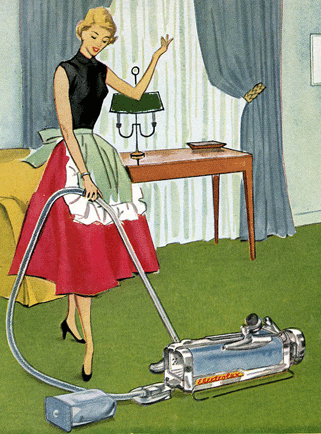|
Thread Number: 28017
/ Tag: Brand New Vacuum Cleaners
Air watts bagged vs bagless vacuums |
[Down to Last] |  |
| Post# 313032 , Reply# 1 1/23/2015 at 10:32 (3,374 days old) by sebo_fan (Scotland, UK, member AKA ukvacfan, & Nar2) | ||

Air watts should never be trusted. They are not measured properly in my experience and its a fad term that Dyson invented to promote his bagless vacs on the NLOS/No loss of suction claims.
The Air Watts may be higher than those listed with Dyson vacs but the bags do start to weaken suction and usually most brands indicate that the air watts has been measured using a fresh, new dust bag on board OR tested at the opening of the hose. I once found an interesting video on You Tube explaining the truth behind Air watts. A lot of the info is true in the video though. | ||
| Post# 313041 , Reply# 3 1/23/2015 at 12:38 (3,374 days old) by sensotronic (Englandshire) | ||
|
I'm not sure if Dyson invented the term air watts as I have Hoover brochures dating from 1983 that specify the air watts of cleaners. I seem to remember the first generations of Sensotronics had 250 air watts generated by a 1000 watt motor. | ||
| Post# 313055 , Reply# 4 1/23/2015 at 13:31 (3,374 days old) by Mike81 () | ||
|
250 aw is very good from the 1000w motor and more impressive from the 32 year old vacuum. I have been reading those consumer reports tests and bagless models have less suction and more noise in every test where bagless and bagged are in the same test. | ||
| Post# 313059 , Reply# 5 1/23/2015 at 14:11 (3,374 days old) by oliveoiltinfoil (England, UK) | ||

Sebo bags, especially there latest ones which are much better made than previous ones, you can fill right to the top without any noticeable loss of suction power and those bags work out at around £1 each, or a box of 8 for around £9. Not expensive at all really.
Sebo seem to measure their suction power in litres of air per second, both the Felix and Felix eco rated exactly the same at 80 l/s. | ||
| Post# 313240 , Reply# 7 1/24/2015 at 16:36 (3,373 days old) by sptyks (Skowhegan, Maine) | ||
Air Watts... Are pretty much useless method of measuring vacuum cleaner performance.
The only reliable methods of measuring a vacuum cleaner's performance is airflow in Cubic feet/minute (CFM) or Liters/second and Inches of water for suction.
Air Watts are not accurate because the formula for calculation includes the wattage of the motor which can vary greatly in efficiency. Example: a 1200 watt Dyson motor may be more or less efficient than a 1200 watt Sebo motor. | ||
| Post# 313247 , Reply# 9 1/24/2015 at 17:31 (3,373 days old) by sebo_fan (Scotland, UK, member AKA ukvacfan, & Nar2) | ||

Air watts before Dyson? I stand corrected.
So, are Hoover to blame for misleading customers regarding air watts? Seems likely when the dust bag progressively clogs up and cuts the suction, despite most Sensotronic models feature variable power to compensate. I have an Electrolx Excelio which uses an Electrolux S-Class bag as standard. Yes, it is highly efficient on filtration but I haven't noticed much of a diference between these bags and Miele's IntensiveClean or indeed the later HyClean bags. Tne New EU labels aren't much help IMHO. Check other threads regarding the labels - they are always producing interesting discussions on here. I can't abide the new labels and don't agree with most of them featured on the vacuums I've bought so far this year that has come with the labels. | ||

 Comes to the Rescue!
Comes to the Rescue!